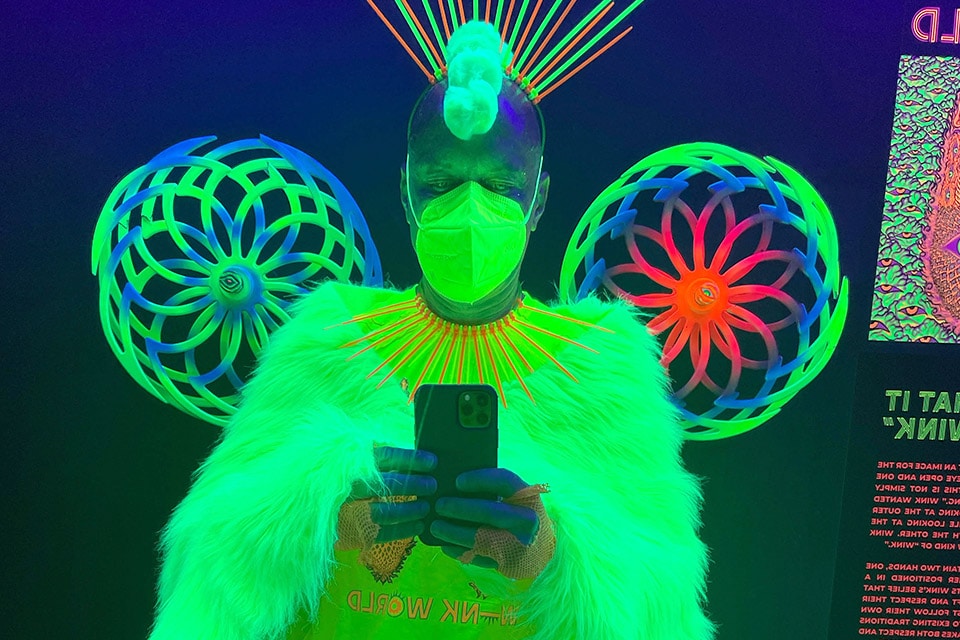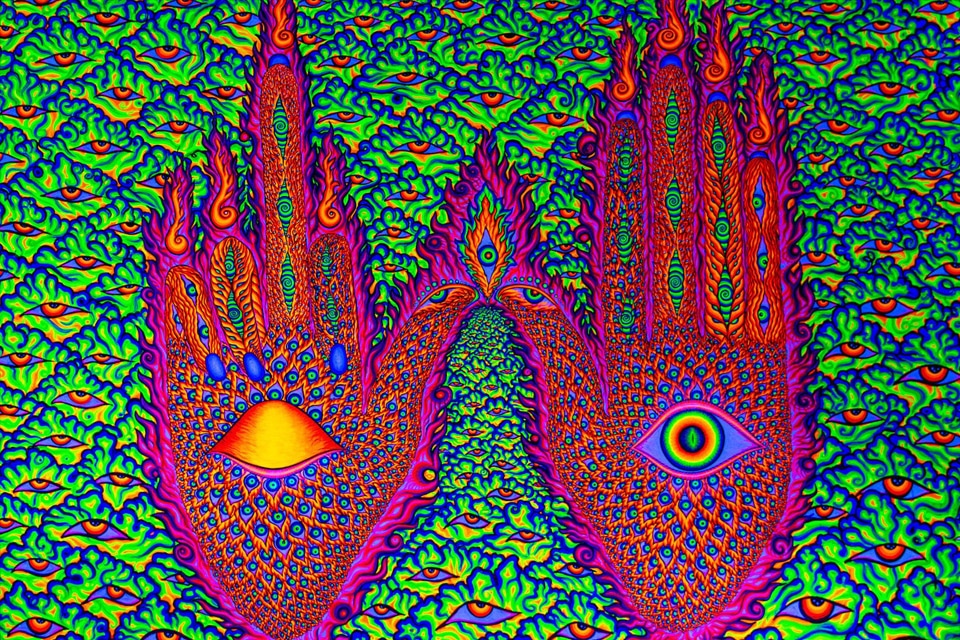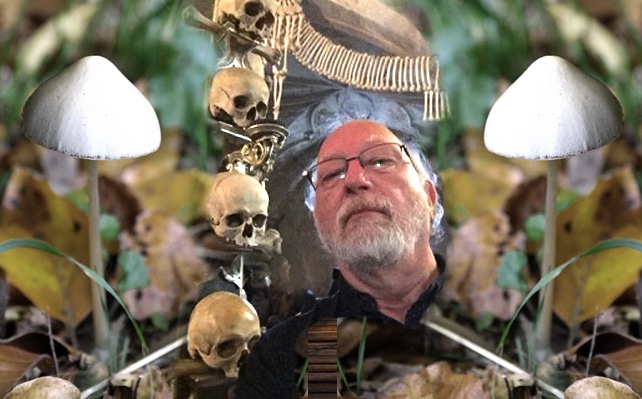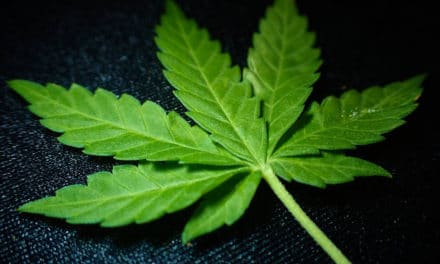In our continuing conversation with Chris Wink, co-founder of Blue Man Group and creator of the psychedelic art exhibit Wink World, we discuss the nature of play and how it relates to art, life, and the psychedelic renaissance.
Thanks again for speaking with us Chris! In our last conversation, we touched on the idea of “psychedelic fun.” What does play mean to you, and what role does it have in your artistic process?
Play really is my artistic process. It’s all about iteration. I don’t have visions of finished work ever- I always have a clue, like “this might be something interesting,” and then from there I play and try to see if I can find a way to delight myself. I’m the test audience. I don’t feel like I make a lot of good work from an intellectual space. Of course I’m using my brain, but I’m trying to analyze less and access whatever happens when you play. And I’m also accessing my body of course, which playing almost forces you to do. So play is everything!
That’s kind of incredible but also makes a lot of sense, that all the complexity of Blue Man Group came from years of iterative play.
I was just playing with a fractal image earlier this morning. They are pretty, and you don’t need to understand the mathematics to enjoy them. In some of the better pieces I look back on most fondly with Blue Man Group, we kept zooming in to certain things like a fractal. We didn’t change the shape, we zoomed in and added to the little parts. The longer you spend doing that, the less it changes the overall picture.
One of my first thoughts when I was looking at Wink World’s Portals Into The Infinite online was that this was the funhouse version of Alex and Allyson Grey’s COSM. Instead of a more solemn and sacred atmosphere, which we can call the hermit archetype, it was the jester, the sacred fool, and playfulness.
I think toggling back and forth between those two archetypes is kind of what artists do. If you notice the Wink World logo with the hands, one of the hands is open, and the other is giving the finger. This is the hand of reverence, this is the hand of irreverence. One eye open, one eye closed, which is the idea of a wink, like “hey I’m kidding” or whatever, but it’s one eye looking at the world, one looking at the inner world. Any work that has a psychedelic vibe, it’s about the fusion of inner world and outer world, from the surrealists to the visionary artists, there’s the blending and blurring of the inner and outer worlds.
I spend a lot of time in a mode of reverence, learning the craft and what others have done before me, putting in my time and learning the rules. But every artist has to find that rebellious side to find their own voice. I think they’re both super valuable, because if you just go with the fool, where there’s no structure, anything goes, it’s anarchy. If you go too far in that direction, there might be innovation but no structure to get anything done. It’s not a space you can stay in permanently. I might play around there, but then I put my worker hat on and get it done. When you are measuring glass and putting in safety stuff, you don’t want a fool doing that.
These archetypes are things we all have, and we can jump into them instantly. We can have a silly time, a serious time, a visionary time. The artist needs to have that full element, including the punk rocker who wants to break the rules. Any kind of pattern of success becomes calcified once it is successful and loses its initial intent. A very useful system can become stagnant and bureaucratic and barren. We have to destroy the world we’ve created to keep it functioning at its best. But that destruction can’t be so destructive that it breaks the whole thing down. I feel like the combination between those elements is key.
Very well said. This reminder of the importance of balancing these two forces is so important to keep in mind today. I think of the psychedelic renaissance, it perhaps has an over-emphasis on the medical and therapeutic models, like these medicines are sacred, only take them with doctors or in clinical trials, versus well, what about the millions of people who have had incredible re-creational experiences at festivals, or at Wink World, or anywhere else?
Yea you hear that at the conferences. Everyone is appreciative of the medical model pushing things forward socially and legally, and it’s this stake in the ground that makes sense. But the playful side of psychedelics is incredibly important too. The healing and all that kind of work is awesome, but it is harder to talk about other contexts, because at what point are you saying recreational use of psychedelics is great and everyone should do it. I’ve got kids, and I’m trying to make sure they know the dangers and the benefits of certain things. I’m not sure how to have that conversation in society, but we have to figure it out. How do we talk about times we’ve taken acid and just looked at glow paintings and laughed?
I’ve been involved in some incredible healing journeys with psychedelics, and those ceremonies were somber and beautiful. At one point though during one specific ceremony, I wanted to get up and move my body and dance a little, and the leader was like “No, no, you can’t do that” I was struck by how strict the rules were.
This sense of play is the elephant in the room. We can’t ignore the fact that this is a huge part of what psychedelics have to offer. Or maybe the other way around, play has something to offer the psychedelic renaissance. And maybe we have to have a dialogue about that, but without sounding or being irresponsible.
Yea there is a reflective fear, because if you look at the 60’s, the pendulum was in the opposite direction, and as such it couldn’t integrate into the existing culture.
You’re right, that’s the fear. We can’t do the 60’s again, yet how can we explore that side in a way that doesn’t mess up the slow march towards legalization and that stuff.
While we don’t want to go “full 60’s” we probably want to go halfway there, because that’s the real balance between the safe, the measurable and the contained, and the mystery, the catharsis, the unbridled exploration. True play always involves some level of risk. The iterative creative process can be seen as taking risk after risk after risk, always jumping into the unknown.
I really like that because in a way, a game is a space that’s been created where there’s a safe space for risk. There are stakes and there are risks, but they are contained. A game that doesn’t have any stakes or risk is not really a game. But you also want to avoid the worst consequences, so you have the protections in place, you want to go to the edge but want to avoid too many people getting hurt.
Acceptable risk is something that’s so disproportionately applied to different areas in life. If you think about driving, that is an incredibly dangerous activity, but we accept that risk. An inch of movement with one’s hand or a second-slow reaction time could leave multiple people dead or seriously injured. Yet we allow every adult to take that risk literally all of the time. How does that level of risk compare to someone going out into the woods to take mushrooms with some friends? Some folks might say “woah that’s a risky environment to be tripping hard” but as we know, that’s the space where the greatest magic often happens. Are we so disconnected from nature that we feel that it is fundamentally unsafe, compared to our buildings and offices? But I digress.
Chris, thank you so much for your time, your insights, and your awesome playful creations.
My pleasure, thank you Wesley!
We are very grateful to Chris for taking the time to speak with us. Learn more about Wink World and get tickets here.











